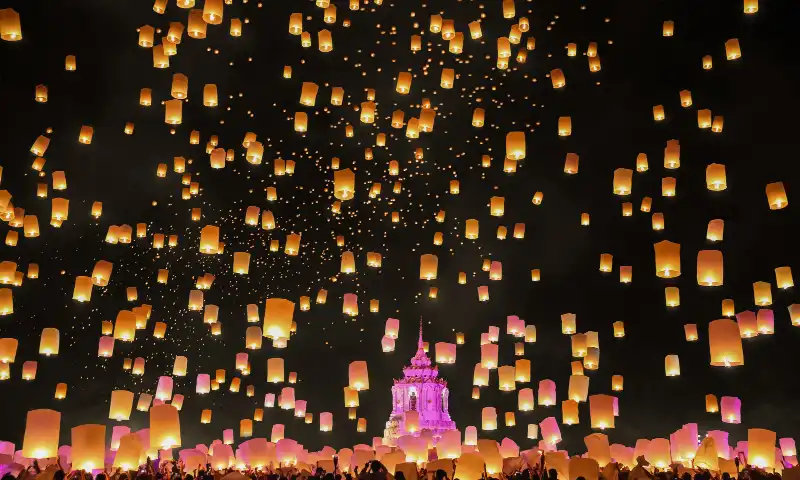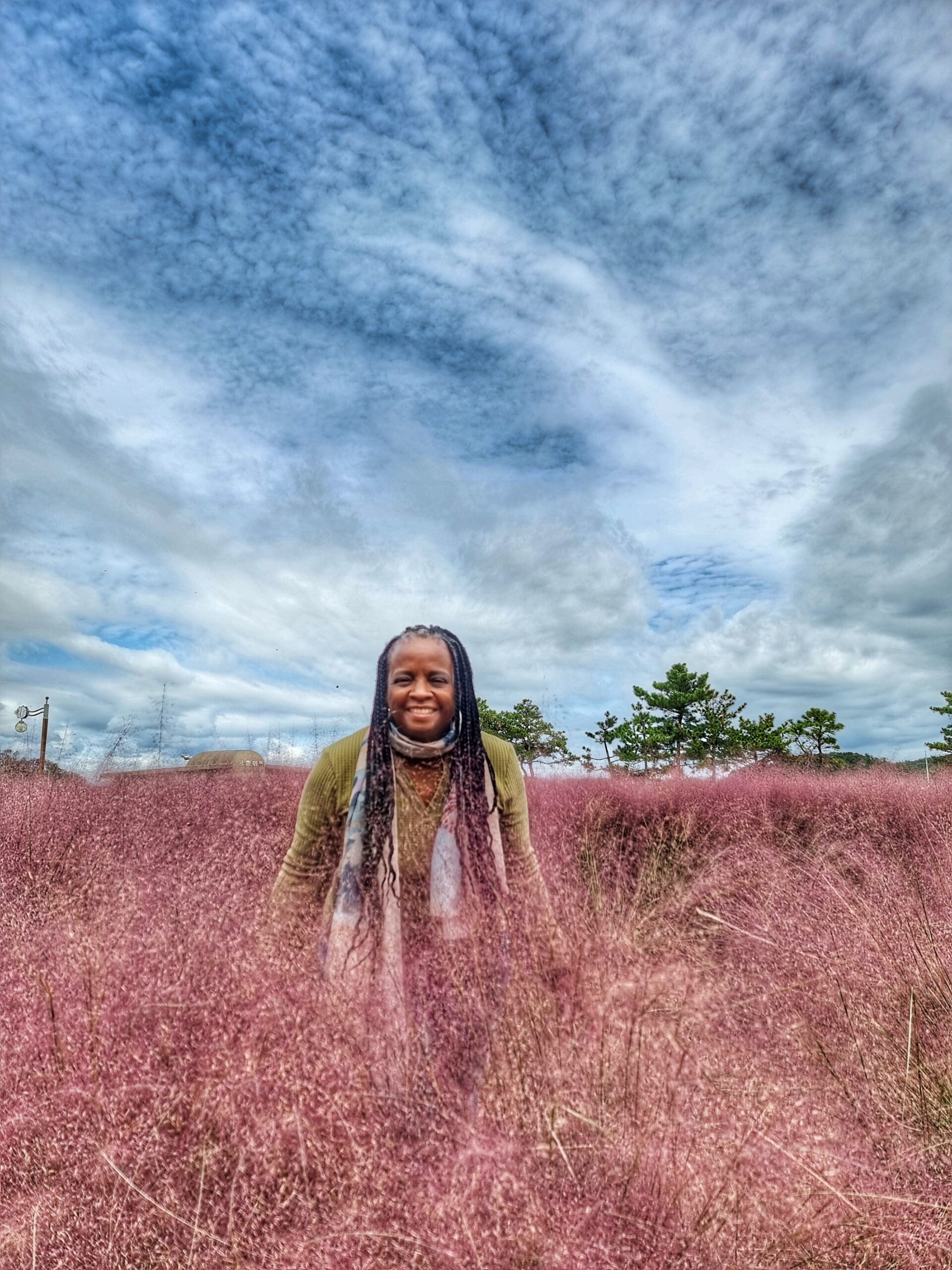|
Getting your Trinity Audio player ready...
|
Blooming Season– Flowers in South Korea
While Seoul is known for its stunning floral exhibits, limiting your flower-loving adventures to the capital city is unnecessary. South Korea is brimming with natural wonders that will leave you breathless, leaving you awe-inspired and eager to splash your Instagram feed with vibrant colors. We’ll encounter a breathtaking variety of flowers, from elegant chrysanthemums to dazzling sunflowers, the delicate charm of buckwheat, enchanting pink muhly, graceful silver grass, and the timeless beauty of roses. So let’s go on an aromatic guide through the calendar of flower blooming in South Korea, celebrating the beauty of each season and highlighting some of my favorite flower seasons in the order they typically bloom near Daegu.
Table of Contents
- Blooming Season– Flowers in South Korea
- Cherry Blossoms
- Canola Flowers
- Azaleas
- Barley Grasses
- Lavender
- Sunflowers
- Hydrangea
- Roses
- Lotus Flowers
- Cosmos Flowers
- Pink Muhly
- Pampas Grass
- Chrysanthemums
- Like it? Pin it!



Cherry Blossoms
late March to early April
Our blooming schedule in spring, typically from late March to early April when South Korea is adorned with a breathtaking canopy of pink cherry blossoms. Daegu offers numerous spots to witness these cherry blossoms, but I have two favorites. The first is along the Uksucheon Stream, where you can enjoy the vibrant display of bright yellow forsythia that blooms simultaneously with the cherry blossoms. The second is the drive from Daegu to Gakbuk (near Cheongdo) along the Gachang Dam Entrance Hulty Road, where both sides of the road form a canopy overhead, adding to the whimsical experience. Another dramatic place to see the double cherry blossoms is at the Dragon Temple in Pohang. But if you live on or have access to Camp Walker, don’t worry. You also have a pretty exclusive viewpoint beyond gate #4.


Canola Flowers
Early April
As April unfolds, vibrant fields of canola flowers burst into bloom, casting a golden glow across the countryside. One particular April afternoon, I decided to drive leisurely through the rural landscape between Ulsan and Daegu. Seeing those brilliant yellow canola fields took my breath away, and I forced Steven to pull over. The sun bathed everything in a warm, honeyed light, and the gentle breeze carried the sweet scent of the blossoms through the open windows of my car. It was a moment of pure serenity, and I couldn’t help but stop by the side of the road to capture the scene with my camera. The photographs and video still serve as a vivid reminder of April’s beauty each year and how nature can paint the world in the most enchanting colors.



Azaleas
late April to early May
Hiking Biseulsan Mountain from late April to early May is an unforgettable experience. As my friends and I embarked on the trail, we were greeted by the breathtaking sight of azaleas, adding their vivid colors to the natural canvas of the mountain. The trail was lined with these beautiful blooms, painting the landscape in hues of pink and purple. We couldn’t help but pause now and then to admire the vibrant azaleas and capture their beauty in photographs. It was a perfect reminder of how nature’s artistic touch can transform a simple hike into something special.


Barley Grasses
April and May
Barley flowers in South Korea typically bloom in spring, specifically in April and May. These delicate blooms add to the springtime tapestry, creating picturesque fields of green and gold. As I strolled around Hajungdo Island, the barley flowers had just started to bloom. Their delicate white and green hues blended seamlessly with the lush greenery. The barley fields stretched as far as the eye could see. With each step, I could feel the gentle rustle of the grasses against my legs. The swaying barley, the soft spring breeze, and the warm sun overhead created a serene and picturesque scene. It was as if I had stepped into a famous painting.



Lavender
May to June
In late spring and early summer, around May to June, we’ll immerse ourselves in the soothing fragrance of lavender fields. I strolled through lavender fields in Provence and loved it. So, the chance to wander through the fields in South Korea was a no-brainer. Running my fingers through the lavender stalks and the sensation of the fragrant oils lingering on my hands for hours. My clothing for days was the perfect souvenir of a day well spent. And don’t miss the Provence Village or Byukchoji Gardens in Paju for lavender and more.



Sunflowers
May to June
I set out on an unforgettable journey from Daegu to Gyeongju. I was excited to see the breathtaking sunflower fields that bloom from May to June. My ultimate destination was the enchanting Basilla Cafe. It’s a pretty riverside establishment boasting panoramic views of the majestic mountains and the tranquil river. As I savored my coffee and cast my eyes upon the expansive sea of sunflowers. I felt the joy that only a spring morning road trip could deliver. Basiilla Cafe is also a great place to see the canola flowers too.




Hydrangea
late May to early July
During the Hydrangea Festival in Gongju, I spent a few hours braving the 100-degree heat. I was sweat-soaked and muddied, while my hubby Steven was living the dream in a cool air-conditioned cafe nearby. I spent hours trying to capture the perfect hydrangea shot under the scorching sun. Shoot, I couldn’t help but envy his smart choice. It turned into a “hydrate for the hydrangea” mission as I snapped away. But in the end, the muddy shoes and sweat-soaked clothes were totally worth it for those Insta-worthy shots.


Roses
May to June
Surrounded by roses of every color of the rainbow, the fragrant air was filled with their sweet, intoxicating scent. As I wandered through the rose garden at Duryu Park, I couldn’t help but be captivated by the untamed beauty that prevailed despite the absence of meticulous grooming. With its vibrant and varied hues, each rose seemed to tell a story of resilience and natural grace. It was a powerful reminder that even in neglect, nature possesses an innate ability to create beauty that can truly take your breath away. In all its wild and unrefined splendor, this rose garden served as a living testament to the extraordinary artistry of the natural world.




Lotus Flowers
June to July
My visit to the Tiyom Pink Cafe in Cheongdo, with its picturesque setting in front of the Yudeungyeonji Pond, was a truly enchanting experience. When I arrived, I was drawn to the beautiful lotus flowers that adorned the pond, casting a serene ambiance. In the heart of the pond sat the historic Gunjajeong Pavilion, which seemed to hold the secrets of centuries past. As I followed the meandering path around the pond, I could view the lotus flowers from various angles, each more breathtaking than the last. The lotus flowers bloom for two glorious months, from June to July, ushering in a profound sense of peace and serenity.



Cosmos Flowers
September to October
As the sun dipped toward the horizon, I stood in a vast field of fiery red, vibrant yellow, and rich orange cosmos flowers, witnessing the beauty of flowers blooming in South Korea. Their petals glowed with an inner light as the sun kissed them goodnight. The colors intensified, painting the entire field in a fiery palette of warm tones. The gentle breeze rustled the blooms, creating a soft, melodious symphony. These cosmos flowers bloom from September to October, swaying in unison to the evening breeze’s rhythm. My favorite place to see them is in the small microcosm of Hajungdo Island. The island is a small river island located in the middle of the Geumho River. I go there at least once a month to see what flowers are blooming all around South Korea.



Pink Muhly
September to October
Walking through a field of pink muhly during the months of September to October is like stepping into a fairytale. The delicate, feathery plumes of the grasses create an ethereal, dreamlike landscape. As I meandered through the field, the grasses swayed gracefully in the breeze, their fronds brushing against my skin softly, their look softer than the actual feel. The sheer whimsical beauty of the scene was mesmerizing as if I had entered a magical realm where the boundaries between reality and fantasy blurred. My favorite places to see the pink muhly grasses near Daegu are at Songhae Park and Gasan Supia.



Pampas Grass
August and September
I tried to capture the beauty of the pampas grass all around me. I’m sure there are some places closer to Daegu, but I got to experience the pampas grass at the Expo and Botanical Garden in Uljin. It blooms in the autumn months of August to September. The delicate, feathery grass plumes swayed against a backdrop of vibrant fall foliage bathed in soft golden sunlight. I played with my camera’s settings, creating images ranging from sharp HDR ultra-realistic to a whimsical bokeh effect that made the mages in the foreground pop out of the picture. However, I got swept up in the attempt, trying to stay fully immersed in the moment. I learned long ago that photography isn’t just about the image but also about embracing the transient beauty of time itself.



Chrysanthemums
October to November
As the year nears its end, chrysanthemums symbolize autumn from October to November, often showcased in the hydrangea festival in Yurim Park in Daejeon, where flower blooming in South Korea takes center stage. I discovered some easy telltale signs while wandering through Yurim Park in Gongju during the hydrangea festival. Chrysanthemums, with their intricate, layered petals, give off a distinct floral fragrance, and they come in a variety of warm, earthy tones like reds, yellows, and oranges. On the other hand, hydrangeas, I realized, have a more subtle scent, and their large, globe-like clusters of tiny flowers come in shades of blue, pink, and purple. It was a delightful puzzle, and figuring out which added an extra layer of enjoyment to my autumn outings. One of my favorite places to see the fall flowers is Samunjin Pier in Daegu.
Like it? Pin it!



This post is sponsored and/or contains affiliate links, from which I earn a commission at no extra cost to the reader. I appreciate your support and know that all the views expressed are my own.
Thank you for reading this post, don't forget to subscribe!
Discover more from Duffel Bag Spouse Travels
Subscribe to get the latest posts sent to your email.


These are beautiful pictures, thank you for sharing. I want to see all the flowers in Korea one day.